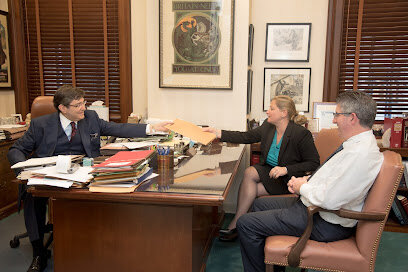Best Accidents & Injuries Lawyers in Minnesota
Share your needs with us, get contacted by law firms.
Free. Takes 2 min.
Or refine your search by selecting a city:
List of the best lawyers in Minnesota, United States
United States Accidents & Injuries Legal Articles
Browse our 1 legal article about Accidents & Injuries in United States written by expert lawyers.
- What to Do After a Serious Car Accident in the US: A Legal Step-by-Step Guide
- Call 911, get medical help, and do not admit fault. Photograph the scene, vehicles, and your injuries, and get witness names and the officer's report number. Report the crash to your insurer quickly. In no-fault states, PIP deadlines are short (e.g., Florida requires initial treatment within 14 days; New York... Read more →
About Accidents & Injuries Law in Minnesota, United States
Accidents and injuries law in Minnesota is a branch of civil law focused on providing compensation to people who have been harmed by the negligent, reckless, or intentional actions of others. These cases often involve personal injuries from car accidents, slips and falls, workplace incidents, medical malpractice, product defects, and more. Minnesota uses a system of laws designed to hold at-fault parties responsible while providing injury victims with a way to recover medical costs, lost wages, and other damages related to an accident.
Why You May Need a Lawyer
Facing the aftermath of an accident or injury can be overwhelming. A lawyer with experience in Minnesota's accidents and injuries law can help you navigate complex legal procedures, negotiate with insurance companies, gather evidence, and ensure your rights are protected. You may need a lawyer if:
- Your injuries are severe, disabling, or permanent.
- You are experiencing difficulty securing a fair settlement from an insurance company.
- Liability for the accident is contested or unclear.
- Multiple parties are involved in the accident.
- You are being blamed for the accident but believe someone else was at fault.
- The at-fault party is uninsured or underinsured.
- You want to ensure all potential damages are included in your claim.
Local Laws Overview
Minnesota's accidents and injuries law includes several important local legal principles:
- Comparative Fault: Minnesota follows a modified comparative fault system. If you are found to be partially at fault for your injuries, your compensation may be reduced by your percentage of fault. If you are more than 50 percent at fault, you cannot recover damages.
- No-Fault Car Insurance: For car accidents, Minnesota is a no-fault state. Generally, each driver’s insurance covers their own losses regardless of who caused the accident, but there are exceptions for severe injuries.
- Statute of Limitations: There are time limits for filing lawsuits. In most personal injury cases, the deadline is six years from the date of injury, but shorter deadlines may apply to specific cases such as wrongful death or medical malpractice.
- Damages Cap: Minnesota does not generally cap personal injury damages except in certain medical malpractice cases.
Understanding these rules is important for anyone who has sustained injuries or losses due to an accident in Minnesota. Local legal procedures and deadlines can significantly impact your ability to recover.
Frequently Asked Questions
What should I do immediately after an accident in Minnesota?
Seek medical attention, report the accident to relevant authorities (such as the police or your employer), document the scene and your injuries, and notify your insurance company as soon as possible. If possible, gather contact details of witnesses.
How long do I have to file a personal injury lawsuit in Minnesota?
Most personal injury actions must be filed within six years of the date of injury. There are exceptions for specific claims, so it is important to check deadlines or consult an attorney.
Does Minnesota’s no-fault law apply to all car accidents?
No-fault insurance covers many car accident claims in Minnesota, but you may step outside the no-fault system and file a lawsuit if your injuries are severe or your medical bills exceed a certain amount.
What is “comparative fault” and how does it affect my case?
Minnesota uses comparative fault, which means your compensation may be reduced if you are partially to blame. If you are more than 50 percent at fault, you cannot recover damages.
What kind of damages can I claim in a Minnesota personal injury case?
You may claim compensation for medical bills, lost wages, pain and suffering, property damage, and other losses caused by the accident.
Are there compensation limits in Minnesota for personal injury cases?
There are generally no caps on injury damages in Minnesota except in certain medical malpractice cases.
What if the at-fault party does not have enough insurance?
You may be able to seek compensation through your own uninsured or underinsured motorist coverage if the at-fault party’s insurance is insufficient.
Can I still file a claim if I was partially at fault for my injury?
Yes, as long as you are not more than 50 percent responsible. Your recovery will be reduced by your share of fault.
How do I prove negligence in a Minnesota personal injury case?
You must prove the other party owed you a duty of care, breached that duty, and caused your injuries as a result. Evidence such as accident reports, witness statements, photos, and expert testimony can help establish negligence.
What can a Minnesota personal injury lawyer do for me?
A lawyer can help evaluate your case, gather evidence, negotiate with insurance companies, represent you in court, and work to maximize your compensation while protecting your legal rights.
Additional Resources
Here are some Minnesota organizations and governmental bodies that offer information and support to people involved in accidents and injuries:
- Minnesota Department of Public Safety - for car accident statistics, safety programs, and reporting information.
- Minnesota Judicial Branch - for court resources and legal forms.
- Minnesota State Bar Association - for lawyer referral services.
- Minnesota Department of Labor & Industry - for workplace injury claims and workers’ compensation.
- Minnesota Office of Traffic Safety - for driving and accident prevention resources.
Next Steps
If you or someone you know has experienced an accident or injury in Minnesota, consider the following steps:
- Preserve all information and records related to the incident, including medical reports, accident scene photos, and communications with insurance.
- Consult with a qualified Minnesota personal injury attorney to get a professional assessment of your case and understand your rights and options.
- Stay within applicable time limits for making claims to avoid losing your right to pursue compensation.
- Utilize available resources for guidance and support throughout the process.
Seeking the right legal help early in the process can make a significant difference in the outcome of your Minnesota accidents and injuries claim.
Lawzana helps you find the best lawyers and law firms in Minnesota through a curated and pre-screened list of qualified legal professionals. Our platform offers rankings and detailed profiles of attorneys and law firms, allowing you to compare based on practice areas, including Accidents & Injuries, experience, and client feedback.
Each profile includes a description of the firm's areas of practice, client reviews, team members and partners, year of establishment, spoken languages, office locations, contact information, social media presence, and any published articles or resources. Most firms on our platform speak English and are experienced in both local and international legal matters.
Get a quote from top-rated law firms in Minnesota, United States — quickly, securely, and without unnecessary hassle.
Disclaimer:
The information provided on this page is for general informational purposes only and does not constitute legal advice. While we strive to ensure the accuracy and relevance of the content, legal information may change over time, and interpretations of the law can vary. You should always consult with a qualified legal professional for advice specific to your situation.
We disclaim all liability for actions taken or not taken based on the content of this page. If you believe any information is incorrect or outdated, please contact us, and we will review and update it where appropriate.
Browse accidents & injuries law firms by service in Minnesota, United States
Minnesota, United States Attorneys in related practice areas.
Browse accidents & injuries law firms by city in Minnesota
Refine your search by selecting a city.









